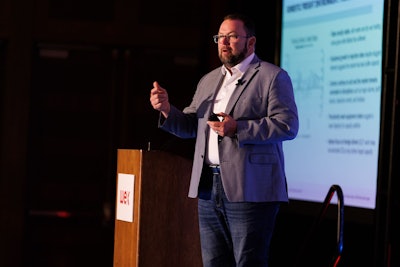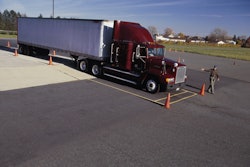
The trucking industry is facing several headwinds, according to Werner Enterprises (CCJ Top 250, No. 14) CEO Derek Leathers.
Freight rates remain “stably horrible,” often below operating costs, Leathers said, speaking at the WEX OTR Summit in San Antonio, Texas.
“It’s been very tough being a trucker,” Leathers said, describing the current freight downturn as “the worst in modern history,” mainly because of its length, which has lasted for about three years compared to the typical 14-15 months for previous cycles.
Smaller carriers are unable to generate enough revenue to sustain operations, and bankruptcies in the industry are signaling a deeper capacity contraction ahead.
Another factor that Leathers said will shape the industry: Class 8 truck orders that have been weak for months, with FTR reporting a 41% year-over-year decline in September.
OEMs can't immediately restore full production once demand returns, he said, pointing out production activity during the COVID-19 pandemic.
“If you take COVID as an example, when those truck makers downsized their production capabilities for health and other reasons, it took them nearly two years to get back up to normal production levels,” he said.
With OEMs downsizing production levels, Leathers said, “It’s a couple of years to build back to even get back to sort of replacement-level builds from OEMs.”
Combined with aging fleets that need to be replaced, uncertainty with tariffs and emissions regulations, and costly EPA-compliant trucks, Leathers warned that capacity recovery will be slow and expensive.
“The one thing that does appear to be true is that trucks will be more expensive for some time to come,” he said.
Mexico cross-border operations
Leathers said Werner moves 300-400 cross-border loads daily between the U.S. and Mexico, with that number sometimes exceeding 400 loads during busier times of the year.
The nearshoring trend remains robust despite tariff uncertainties. According to BBVA Research, the first half of 2025 totaled $34.3 billion foreign direct investment, with the U.S leading the contribution to 42.9%.
“It is, in fact, U.S. companies investing more and more money in Mexico for this nearshoring trend,” Leathers said.
However, Leathers highlighted a significant enforcement issue with B1 visa drivers, who are legally permitted to enter the U.S., pick up loads, and return directly to Mexico.
While Werner doesn’t use B1 drivers due to the complexity of legal compliance, many carriers do, and Leathers said statistics reveal a troubling pattern: trucks crossing northbound into the U.S. don’t return to the border for three weeks.
“When is that truck ever seen back at the southern border again? And the answer is, on average, it’s over 21 days,” Leathers said.
“Well, I think we all know, if you're running a trucking company delivering off the border into the U.S., and you never made it back to Mexico for 21 days, you would be bankrupt very quickly with that productivity. So, they're doing something for those 21 days, and it's certainly not returning to Mexico.”
Leathers noted that this strongly suggests these drivers are operating illegally within the U.S. domestic market, creating an unfair competitive disadvantage where carriers are “literally competing against an operational model that could be 20 to 30 cents a mile cheaper than your own, and that’s a very difficult task to overcome.”
That enforcement needs to be increased going forward, Leathers said.














